Using the Beautiful Canon 50mm f/1.2L on the Sony A7RII… Wow
![]()
I have had a great weekend shooting with the now kind-of-old, well-known, and mostly-forgotten-about Canon 50 f/1.2L lens. This lens came out years ago, and has been reviewed hundreds of times by users, reviewers, and anyone with an opinion. So why I am dedicating a post and short review to this lens?
Because now that I have shot it on the Sony A7RII, I have fallen in love yet again with yet another fast 50mm lens! It’s true, I have a 50mm addiction… I think. To me, the 50mm focal length is just so right. It’a so nice, it fits my style perfectly, and there are so many choices out there from old to new to uber old (vintage rangefinder 50s) that can mount on the Sony A7 series bodies via adapters, so why not give it a shot on my A7rII?
Besides, this lens has over 900 reviews on B&H Photo and is averaging around a 4 1/2 – 5 star rating (5 being the max) so that says a TON about this lens’ beauty, capabilities, and desirability.
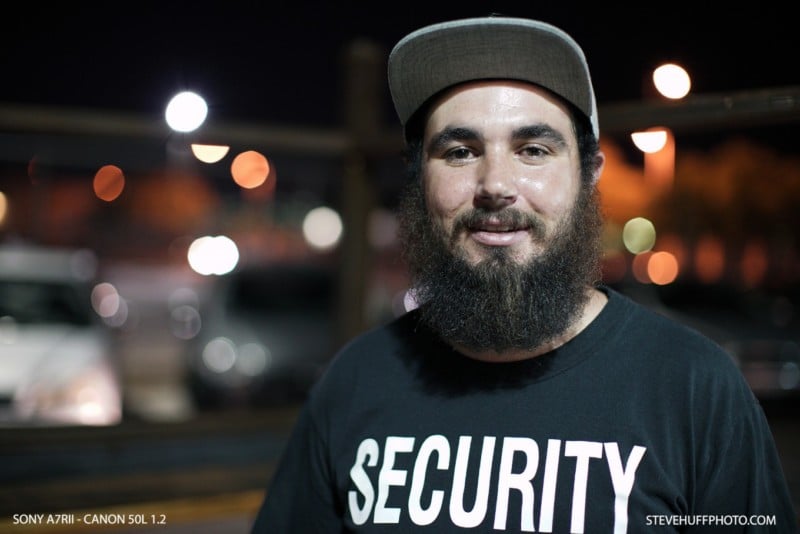
True Story
I used to own the Canon 50 L long ago. I shot with it on a Canon 5D, the original and MKII. I loved and hated it at the same time due to focus shift and focus misses (when used on the old 5D), and slower than average focus.
It seemed that a quarter of my shots using this lens were out of focus when shooting with a 5D, so I eventually sold it many may years ago never to give it a 2nd thought… until about a year ago when I tried it on my A7RII at a photo event. Someone let me use their lens for a shot or two, and I loved what I saw from it out of the Sony. Here are those two quick test shots:
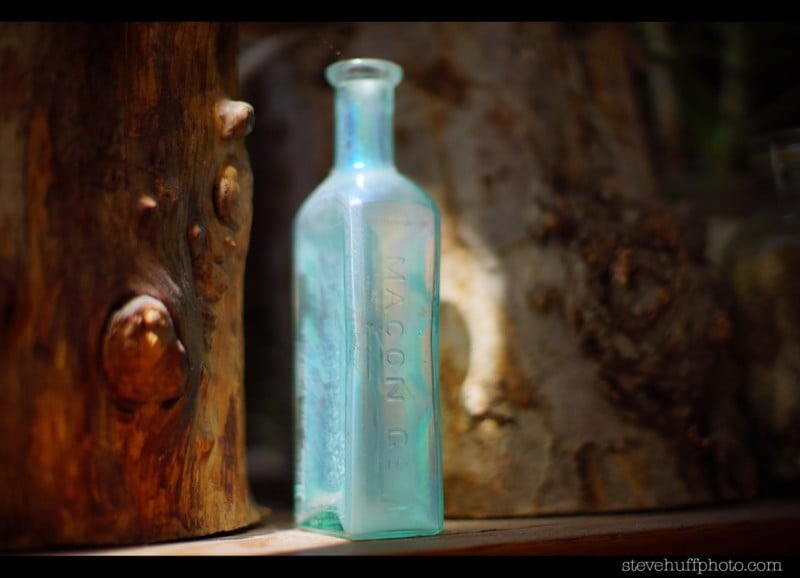
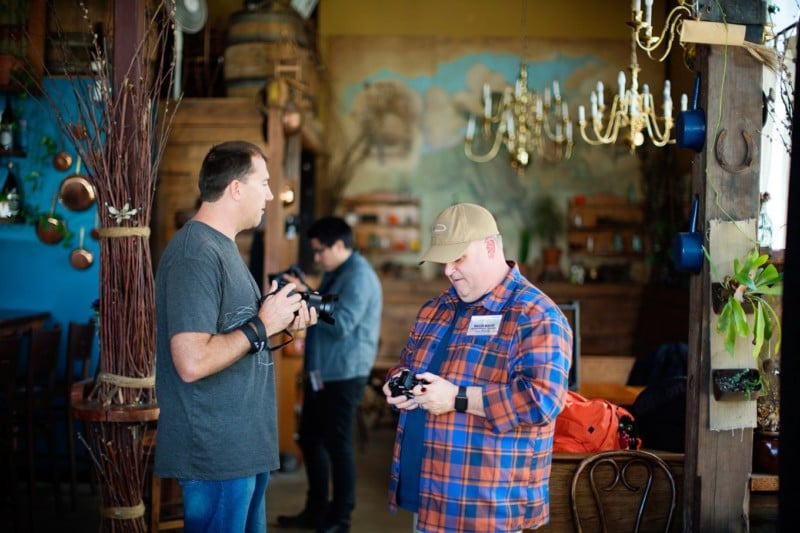
When I saw those two simple shots I was starting to crave owning it again, but I held off and held back because I have a few 50s and I figured it would end up on my shelf with the others, rarely used. So I saved myself some cash and pushed the thought aside… until now, a year later.
I decided I wanted to give it a go on the Sony A7RII, and compare it to the new Sony Zeiss 50 f/1.4, that I found to be STUNNING (my review is here) and very Leica Summilux-like in its rendering.
I have the Sony Zeiss here for a few more days, so figured now was the time to see for myself which lens I would prefer using on my Sony camera. You would assume that Sony would win, but maybe not.
See, I always adored and loved the image quality of this Canon lens, and when it was in focus and “on”, it was truly “on”. It had a little bit of the Canon 85L mojo going on, but was its own animal. Not many lenses out there can render quite like a Canon 85mm f/1.2L. When it comes to the 50 though, some do get close and some are sharper, but I have seen none that quite capture the color and realness of this lens… or the dreamy yet sharp quality it offers.
The new Sony Zeiss 50mm f/1.4—which, to me, renders quite a bit like a $4,000 Leica 50 Summilux—does offer a technically better performance, but I sometimes like a lens that is not technically perfect. Sometimes I like a little glow as it reminds me of the old classic RF lenses that had glow and, to me, that glow gave some of those old images character that is sometimes missing in modern day lenses.
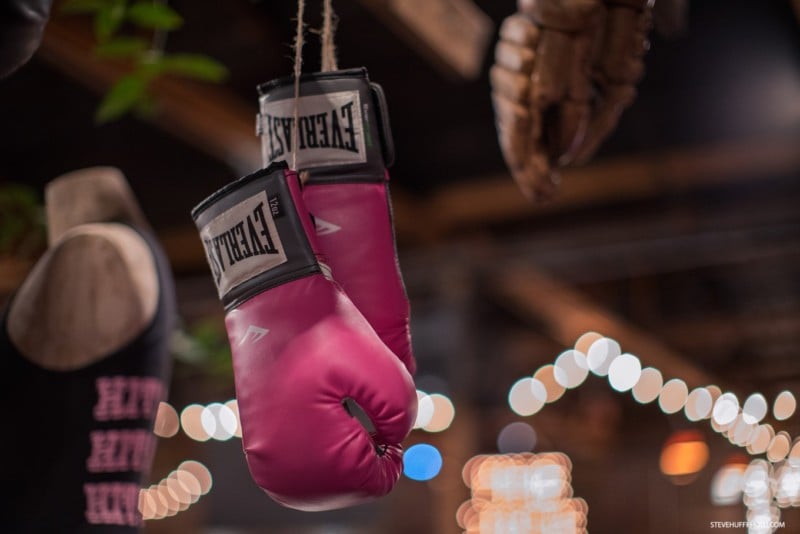
![]()
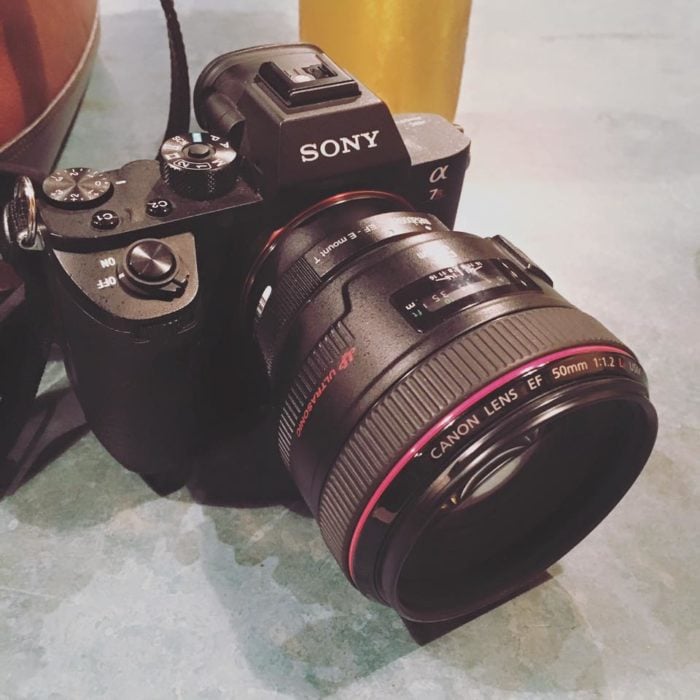
So away I went. I managed to get ahold of a Canon 50mm f/1.2L from LensRentals and when it arrived I was expecting this big, fat, heavy lens. My memory from the early 2000s was not very good obviously, as when I opened the package I found the lens to be pretty small… when compared to the new Sony 50 f/1.4 that is.
It was also lighter, and while it did not have a manual aperture dial (that is a huge plus on the Sony) it looked short, squat, and even with the new Metabones MKIV Canon to E mount adapter, it was still smaller and lighter on the camera. My memory was telling me it was much bigger but I guess our memories can fade over several years.
Now, I am sure many of you reading this (but not all) have experienced this lens at some point in your photographic life if you are a lover of fast prime lenses. Maybe it was one shot you took with it, maybe you owned it, or maybe you just rented it like I did. Either way, after shooting with this lens over the past few days (and nights) I have found that this lens is so much more fun and easier to use on a Sony A7RII than the old Canon 5D I used to shoot with many years ago.
In fact, my first real test with it was when I attached the lens to my A7RII and away we went to shoot a local music performance at a very intimate venue that is always almost always near dark—usually just one red light bulb in the back for light.
I have shot in this room before with a Leica M 240 and it did not do so well due to the max ISO of 6400 (though I had a 50 APO f/2 at the time). I have shot with an A7S here and it did great. I shot with a Leica Monochrome, and it did good as well due to the higher ISO capability, shooting at 10k ISO. The A7RII and Canon did not even break an ISO sweat…
All shot at f/1.2 wide open – EXIF info is embedded:
![]()
![]()
![]()
![]()
![]()
The A7RII with the Canon 50mm f/1.2L? It did so so so freaking good. AF was quick with the Mark IV Metabones adapter (adapter details here), even in the lower light, and I have no idea how that was happening as I assumed it would be dog slow or a failure in low light.
So welcome surprise #1, it did wonderful as far as usability goes, even in lower light with the Metabones adapter. I mean, it was auto focusing in near darkness, which to me was amazing as the last time I tried this lens with an older adapter a year ago it focused slowly. The new Metabones adapter IV seems to be perfect with the lens.
My second welcome surprise was the IQ: just as I remembered it… beautiful. It has a way of rendering or drawing an image in a somewhat soft, yet sharp amazingly pleasing way. From the color, to the Bokeh, to the detail at the focus point even when wide open, this lens delivers the goods better than it did on the old original Canon 5D and even the MKII version.
Wide open of course…
![]()
![]()
To me, a lens like this is something you will either LOVE or HATE. Many out there hate fast primes like this as there are many photographers who just like shooting at f/2.8 or f/4 or even f/8 all the time. Then we have those who crave shallow DOF and unique rendering. It is my personal opinion that a lens like this is MADE and MEANT to be shot at f/1.2.
Back in the old days of film, before digital, there was a different mindset. We bought lenses like this when we needed speed for low light situations. When using say Tri-X 400, we needed all of the speed we could get. When I say “speed” I do not mean Auto Focus speed, I mean the aperture. A fast aperture allows much more light to soak into the lens, allowing us to shoot at faster shutter speeds in low light with lower speed film.
![]()
![]()
Today, these lenses are mainly purchased by those who want the out of focus effects of an f/1.2 lens, and we have so many to choose from. For the Sony A7RII I am shooting alone, there are so many choices for 50mm it’s crazy.
We can use lenses from the 40s through today, all via adapters. So there is no shortage of 50mm choices. I like to break it down by the way they render, and for me, there are only a handful of fast 50s that I truly adore for full frame…
- Leica 50 Summilux
- Leica 50 APO
- Leica 50 Noctilux
- Sony/Zeiss 50 1.4
- Canon 50 L 1.2
- Canon 50 0.95 Dream lens (only used sparingly though)
- Canon 50 1.4 Rangefinder Lens (vintage)
Vs the Sony/Zeiss 50mm f/1.4
![]()
So how does this lens compare to what I think is its main counterpart in the Sony world? Well, the Sony/Zeiss 50mm f/1.4, which was released this year, is gorgeous with a pro build, manual aperture dial, huge lens elements and a quality that (to me) matched the Leica 50 Summilux lens. It’s crisp, has beautiful Bokeh, and has no glow but renders in a more correct way than this Canon.
Even so, they are closer than one would expect. The Canon is basically a hair faster in aperture (f/1.2 vs f/1.4), will cost you $200 more over the Sony when you factor in the adapter, and is also smaller and lighter. The Canon will give you some slight ‘Glow” which is classic and looks nice, where the Sony will just deliver the goods in a very corrected and sharp-yet-beautiful way.
Here are a couple of comparison shots.
1st up, the Canon 50 1.2L at 1.2 (EXIF will show f/1.3). Due to being slightly faster at f/1.2 your “Bokeh Balls” will be slightly larger with the Canon:
![]()
The Sony/Zeiss will give you a more crisp and sharp image and different colors. I always thought the Canon had a pastel like color palette many years ago. Look at the red Bokeh ball to the left of the Beer in both images. The Sony looks red, the Canon looks Magenta. Which is correct? The red:
![]()
![]()
So as you can see above, both of these lenses are beautiful and offers some slight character differences. Both auto-focused about the same here, and the Canon, to me, is simply “gentler” and more dreamy but it’s slight.
How about this one? This will show the sharpness difference up close and personal with 100% crops. I did this test three times to be sure but this is what you can expect in the sharpness department from each lens.
The Canon at f/1.2 is softer than the Sony is when the Sony is at its widest Aperture of f/1.4. Click them to see the difference. It’s quite striking in the crop but when looked at as a whole the Canon just looks a tad dreamier…
So you will not get biting crisp sharpness with the Canon at f/1.2 but you will get that biting sharpness with the Sony when wide open at f/1.4. At the end of the day, these two lenses are alike but very different. Depending on your tastes, wants, needs, desires, and preferences you may prefer the Canon or the Sony/Zeiss.
The Canon is smaller, lighter (even with adapter) and focuses great on the A7RII with the Mk IV Metabones Adapter. The Sony/Zeiss is a modern-day masterpiece of lens design but it is larger, it is heavier, and it will give your arm a workout with an all day shoot. BUT it will also give you crisp snap and details, even when wide open at f/1.4.
It seems Sony has finally figured out how to get Leica quality though at a size disadvantage of course.
![]()
I enjoyed shooting the Canon, and there were moments where I said “I will buy this lens”… and who knows, I may but I am not sure. Lately I’ve used some killer 50mm lenses. The Zeiss Otus 55, The new Sony 50 1.4, the Leica 50 APO… and now this Canon 50 1.2L, which is already a legendary lens.
If one wants dreamy, creamy rendering for their Sony A7 series body, the Canon 50 1.2L is one of the best there is. Period. Where this lens can be preferred over the Sony is with portraits. Where the Sony will render with brutal honesty, exposing every pore, every flaw, and every wrinkle the Canon will be kinder to your subjects and go a little bit softer on the lines, wrinkles, and imperfections. For that reason, some may prefer the Canon for portraits. But with the Sony we get a more precise and sharp rendering along with the great creamy Bokeh and a Leica Summilux style of rendering with a crisp sharp subject and a creamy dreamy blown out background if shooting wide open.
They are close in price, and in performance the Sony edges out the Canon for the detail wide open but the Canon is smaller, even with adapter attached, and the Canon gives off some of that classic glow of lenses past.
The Canon 50 f/1.2L is for those who are artistic, who enjoy uniqueness, who want something different from everyone else and who wants speed (aperture), some dreaminess, and a solid well-made piece of glass that really renders like no other. But perfect it is not.
Truth is, there is no perfect lens. Until the day comes where we have a 50mm lens with a few buttons on it that allows us to transform or mimic famous 50mm lenses, we may just have to be stuck buying them all.
![]()
![]()
![]()
![]()
![]()
![]()
About the author: Steve Huff is photographer, photo enthusiast, and photo blogger behind the original ‘real world’ camera review site. To see more of his work or read more of his reviews, visit his website or give him a follow on Facebook and Twitter. This article was originally published here.